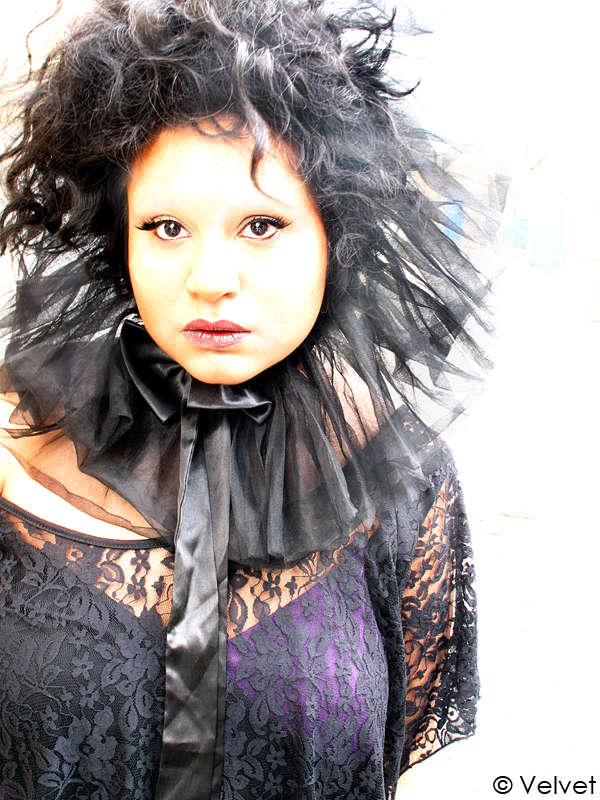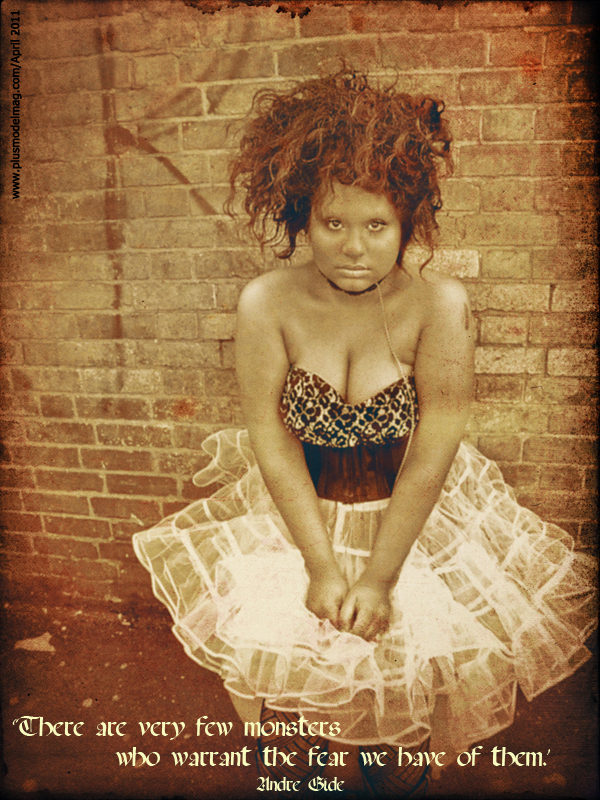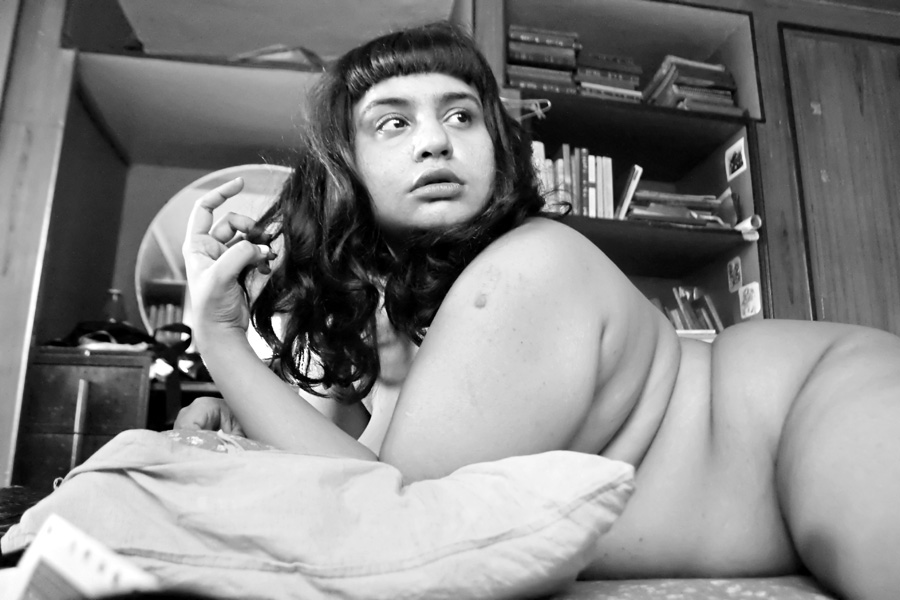Pretending you’re a model is all fun and games till someone gets hurt
Considering that my chosen profession is firmly set in writerly realms now, it might seem strange that a few years ago, it was my life’s ambition to become a model. Infact, I had been harbouring those dreams since I was a teenager, and at one point, had hoped and prayed and dreamed that my ED would shrink me down to model size. I hadn’t come across the concept of a plus size model yet, and all I had known about models was that they had to be preternaturally tall and thin. Tallness I could muster with good posture – enough to make the cutoff, but I never managed to get down to model levels of skinniness. I plateaued at a size UK 8-10 before going into recovery, and my modelling dreams were shelved as I got into University and focused on being an academic. Till 2009.
** **
2009 was the year I really started coming into my own. I started shedding the fat stigma that had haunted me for most of my life – it began with doing away with sleeves on my clothes, after which came the gradual shortening of hemlines, and one day I got naked and asked my then-girlfriend to take as many photos of me from as many different angles as she could. Seeing those photos was tough at first, incredibly tough, but after about a week of constantly forcing myself to look at them, I started finding things about my body that I loved. That was the first time I actually felt good my body – in all its acne scarred, stretchmarked, lumpy and cellulitey glory. Feeling better about the way I looked encouraged me to become increasingly involved with fashion, and that October I started blogging, right around the time when the whole plus size fashion scene exploded, and as a fatty whose world revolved around that corner of the internet, I was in absolute heaven. Suddenly there were plus models galore, but before any of them had the chance to make an impression on me, I came across this Australian Harper’s Bazaar spread with Crystal Renn. And the way it impacted my life was unprecedented.
** **
It felt surreal. Here was a model in a high fashion spread, and her thighs were identical to mine in their fleshiness. She had chunky arms. She had an arse. She even had a roundness to her belly. And yet she was a model, and she looked every bit as legit as her skinny counterparts. Here, finally, was a model I could relate to. I saved the photos on my phone and looked at them almost continuously. They made me feel beautiful, they made me feel like I, too, could look like that if they posed me in those clothes, that makeup and lighting. Of course, it didn’t last. Renn infamously started shrinking shortly after, and I was one of those people who felt personally betrayed because seeing those photos of her had been such a turning point in my life. The sudden plethora of plus models being featured everywhere started leaving me feeling cold and confused after the initial excitement at seeing larger bodies in media. Because the more I looked at plus size models, the more it began to dawn upon me that their bodies were really nothing like mine.
** **
They were all so sleek, with not a hint of lumpiness anywhere, no cellulite, no stretchmarks. They were apparently the same size as I was – a UK 14-16 – but that was where the similarity ended. Their bodies didn’t really bulge anywhere like mine did – none of them had bellies, and all had skinny arms. Of course, there were tiny rays of hope like Tara Lynn’s Spread in D Magazine which left me in raptures, but as the summer of 2010 progressed, so did my dissatisfaction with plus modelling and how it made me feel. My motives then were self centred, I admit – after all I wanted to be one of these incredible creatures and found myself coming up short every time. Ashley Graham’s spread with Madison Plus was a spectacular low for me – I remember posing like that and looking at myself and telling myself that my body was all wrong. I had no “curves”, instead I had a belly, a round, double humped belly that none of these models seemed to possess. For all the body hatred I had lived through since I was 14, my belly had never been a target of my dissatisfaction – infact, I had always thought it was kind of cute. After being exposed to the world of plus models, though, my belly became my most intensely disliked body part. Even as people wanted me to model for them, I started chalking out things that were wrong with my body after a whole year of feeling better about it. My arms which were an entire size larger than the rest of me. My round, fleshy belly. My lack of arse, and my lack of “curves”. The roundness of my face. My inability to “model pout” – the half open mouth that shows off your upper incisors. For a few months I had dared to dream, and that dream was once again relegated to the realm of fantasy. My body, simply speaking, wasn’t good enough.
** **
From the only time I actually modelled
I did, however, get one chance to model the next year thanks to the incredibly lovely Velvet D’Amour (whose magazine, Volup2, is incidentally one of the few things in plus media I can still consume and feel happy afterward). One day in February 2011, I took a 6am train to London and spent the day in and around a busy market in Walthamstow, posing my heart out. It was exhilarating – for once in my life, I felt in my element, I felt like I was doing something I was meant to do. The spread came out a couple of months later, on the very day I was travelling back to India. After I managed to get internet sorted, I breathlessly loaded the photos on my phone. And I felt like the life had gone out of me. I didn’t look like a model. I looked nothing like a model. I looked like a silly girl who was pretending to be a model and who just ended up looking ridiculous. The photos were beautiful and beautifully shot – it was I who hadn’t been a good enough model. I looked pretty enough, and interesting too – just not like the people I saw in magazines. I realised that I didn’t have it in me – I had tried to be something I inherently was not and had ended up looking like an idiot. I entered the AA plus modelling contest a few months after that, didn’t win and shelved my modelling dreams once and for all as I turned a size 18 with a prodigious and prodigiously stretchmarked belly thanks to birth control.
** **
Outtake from the shoot – model enough?
Probably not.
These days, the entire episode of wanting to be a model has become a sort of in-joke for me. I still love putting on makeup and gratuitously pouting at the camera, but I do it to feed my narcissism, which, as I have said before, is a form of selfcare for me. These days when I take selfies in “model poses”, I don’t compare myself to plus models in magazines anymore, and that is incredibly liberating. I joke about how I am giving perfect modelface, but I appreciate myself for who I am instead of berating myself for something I couldn’t be. Once I stopped engaging with plus sized media, I started feeling exponentially better – from finding my fat rolls sexy again to getting used to my double chin, I started appreciating my body for the things I had considered flaws throughout the time I wanted to be a model. It was eerily similar to what happened when I disengaged with popular media back in my undergrad days, and it got me thinking – if plus sized models are supposed to be empowering fat women, why did they make me feel so bad about my body? Is it the bitterness of shattered dreams? Quite likely. There’s nothing as defeating as wanting to be something and then failing miserably at it. But was it just the embarrassment of personal failure, or was there something else at work as well? It has been a couple of years since I put an end to my modelling dreams, and yet plus models continue to irk me in a way straight sized models simply do not. In fact, I enjoy looking at fashion spreads with straight sized models these days; I love brilliantly and imaginatively styled editorials – the clothes, the photography, the art direction, everything. And I think I know why.
** **
I posted this on Twitter recently trolololing about how I need to be a model. I wonder if anyone knew I was actually laughing at myself.
Straight size models do not claim to represent me. They do not claim to empower me. Their job, as far as I am concerned, is to show off the clothes, the hair, the makeup. They don’t claim to do anything beyond that for me. But when a magazine features an editorial with plus size models, it is never just about the clothes. Infact, for a lot of these spreads, the models aren’t even given any clothes. Magazines feature plus models to show off how inclusive they are being, how they are empowering fat women. There is always that message of representation/inclusivity/empowerment behind all media involving plus models. And that is what really bothers me. Looking at photos of models a bit bigger than the status quo with bodies that look nothing like mine is in no way empowering for me. It just ends up feeling like a slap in the face, like an itemized list of all the flaws that I suddenly start going over in my head when I see a plus size model. I believe this is the exact series of thoughts that go through many womens’ heads when they see straight size models, and as far as I know, THIS is what the whole concept of plus modelling was supposed to put an end to – the feeling of self loathing women feel when they look at media. But in the end, current plus sized media is complicit in the very problem it is supposed to solve.
The idea is not just laudable, but extremely necessary – wider representation of body types in fashion and media. It’s the execution that irks me. Because when your idea of inclusivity is to feature models who are only somewhat larger than straight size models, with the kind of bodies that only a very tiny fraction of fat women have – it’s not inclusivity, it’s the same tired bullshit packaged to look different. And I wonder – if, as a woman who is in the same size range as these models but shaped differently, I feel so bad looking at them, how do they make larger women feel? That thought angers me even further. And I am not even going to go into into the snakepit of problems revolving around race in this context because that is another post entirely. If this is what representation of fat bodies is supposed to be like, MEDIA, YOU ARE DOING IT WRONG. This is a very narrow definition of fat, made to look as acceptable as possible to the fat hating world. Infact, this is just another way of playing into the fat shaming that fat people have to go through on a regular basis, and it is especially harmful because it comes under the guise of empowerment. I know I am going to get a lot of flak for saying these things and people are going to claim that I am attacking plus sized models. I’m not. It’s hardly the models’ fault – they are merely doing their jobs – I am placing the blame firmly at the doorstep of media outlets which only feature models in a very narrow size range. The thing is, when plus models first appeared on the scene, it was great – what was not so great is how the scale of representation never actually expanded – it stayed put where it was. This is what I want to see changing. I don’t want to see an end to the current range of sizes and body types in plus fashion – I want to see it expand. I want to see it include larger models, models with features that are considered flaws in fat bodies, size 20+ models, size 32+ models. I want to see unconventional faces, and not just faces that are prettily unconventional. I want to see models of colour, I want to see disabled models, trans models, I want to see non-flawless skin, I want to see short models. And none of them as grotesqueries, but as legit and valid as the kind of models I currently get to see. And only then would I be on board with the claims to inclusive beauty that fashion/media makes.







